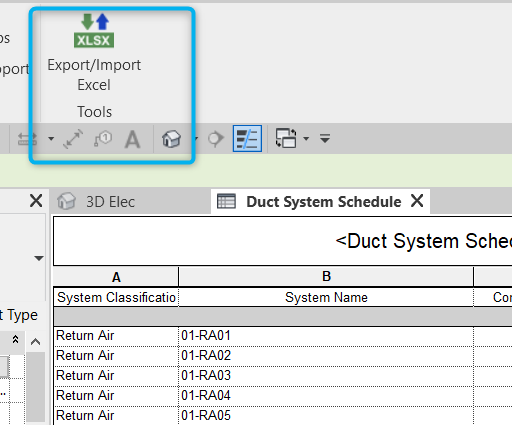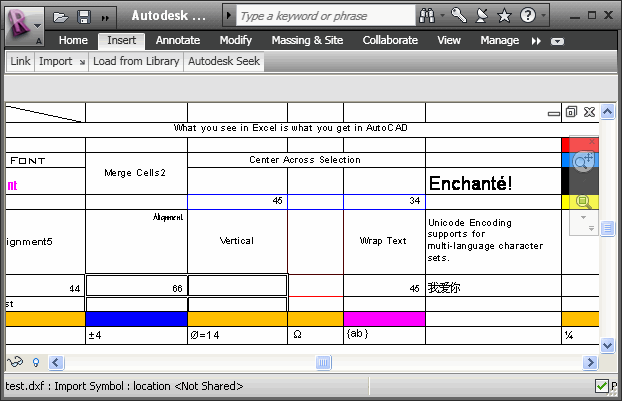Revit Plugins and Tools: Enhancing Your BIM Journey
Wiki Article
Excel Empowerment: Supercharge Your Revit Projects With Seamless Information Import
Are you aiming to supercharge your Revit tasks? With smooth data import, Excel empowerment can be the trick to opening your job's full capacity. Think of enhancing the import procedure and making the most of efficiency through smooth information integration. In this short article, we will share tips and methods for utilizing Excel in your Revit projects. Discover just how using the Excel-Revit connection can lead to success in your tasks. Get ready to take your Revit tasks to the following level with Excel empowerment.The Power of Master Revit Projects
You can supercharge your Revit tasks by taking advantage of the power of Excel for seamless data import. Excel is a versatile device that can significantly boost your process and performance in Revit (import excel into revit). With Excel, you can conveniently import and handle huge amounts of information, saving you effort and timeOne of the vital benefits of making use of Excel in Revit is its capability to take care of complicated estimations and solutions. You can use Excel to do calculations on your data, such as creating quantities, determining costs, or examining performance. When functioning with large jobs that call for comprehensive estimations., this can be especially helpful.

On top of that, Excel offers a easy to use and familiar interface for working with data. You can organize and manipulate your information in a spreadsheet style, making it simple to see and edit. This can be especially valuable when working together with others or when you require to make fast adjustments to your project information.
Moreover, Excel permits you to conveniently import and export data in between Revit and other software program applications. You can import information from external sources into Revit, such as material specifications or equipment timetables, and export information from Revit to Excel for more evaluation or coverage.
Streamlining Information Import With Master Revit
When utilizing Excel as a tool,Improving data import in Revit ends up being much easier. With Excel, you have the power to effortlessly import and handle big amounts of data in your Revit tasks. By making use of the acquainted user interface and performance of Excel, you can save time and increase efficiency in your workflow.One of the key benefits of utilizing Excel for data import in Revit is the ability to conveniently arrange and manipulate information before importing it into your task. With Excel's powerful features, such as arranging, filtering, and formulas, you can rapidly tidy up and style your data to meet the needs of your Revit job.
Additionally, Excel allows you to import data from various resources, such as databases, spread sheets, and even web-based applications. This adaptability provides you the flexibility to gather information from different systems and combine it into one main place for easy accessibility and administration.
Additionally, Excel gives the choice to develop custom-made layouts for data import in Revit. By developing design templates customized to your job's details needs, you can guarantee uniformity and accuracy in your data import procedure.
General, making use of Excel as a device for data import in Revit streamlines the procedure and boosts your efficiency. So why not take benefit of this powerful device and supercharge your Revit jobs with smooth data import utilizing Excel?
Making Best Use Of Performance With Seamless Information Assimilation
Make the most of effectiveness by seamlessly integrating and managing data in your workflow. Gone are the days of by hand inputting data right into your system, throwing away valuable time and resources. With seamless information assimilation, you can improve your processes and supercharge your efficiency.
When you have a seamless integration system in area,Managing information becomes a wind. You can easily organize and classify your data, making it easier to fetch and evaluate. Claim goodbye to the days of exploring unlimited spreadsheets for that piece of info you require.

Excel Tips and Tricks for Revit Projects
With these tips and techniques, you'll have the ability to efficiently handle your Revit tasks using Excel. One of the initial points you can do is to utilize Excel's effective sorting and filtering functions. This will permit you to quickly organize and evaluate your task data. For instance, you can arrange components by their names or filter them based on particular requirements, such as their standing or location. One more beneficial attribute is the ability to create formulas in Excel. You can utilize formulas to determine amounts, do complex estimations, and also automate particular jobs. This can conserve you a great deal of effort and time in your Revit projects. Additionally, you can use Excel to create personalized themes for data import and export. In this manner, you can ensure uniformity and accuracy when transferring data between Revit and Excel. Do not neglect concerning Excel's conditional format function. You can utilize this to highlight particular components or worths based on particular conditions. This can aid you promptly identify and deal with any issues or abnormalities in your task data. In general, mastering these Excel tricks and pointers will greatly boost your capability to manage and adjust information in your Revit projects.Taking Advantage Of the Excel-Revit Connection for Success
To make the most of your Excel-Revit link, take advantage of the capability to effortlessly integrate and move project info. By harnessing this powerful connection, you can supercharge your Revit jobs and simplify your workflow. With simply a few straightforward steps, you can import information from Excel directly into Revit, conserving you time and making sure precision.One of the vital benefits of the Excel-Revit connection is the capacity to move data seamlessly. Whether you are importing routines, area data, or even geometry details, Excel provides an user-friendly user interface that allows you to organize and adjust your information before importing it into Revit. This suggests you can easily upgrade and modify your project info in Excel, and with a couple of clicks, move those changes directly into your Revit design.
Along with transferring data, the Excel-Revit connection likewise permits for synchronization. This means that any modifications made in Excel can be automatically updated in Revit, making sure that your task details is always up to date. This synchronization function is especially beneficial when managing complex and large projects, as it eliminates the demand for manual data entry and decreases the risk of errors.
Conclusion
By streamlining information import and making best use of performance through smooth data integration, you can supercharge your tasks and accomplish success. Don't wait any kind of longer, begin taking advantage of the power of Excel in your Revit jobs today and unlock a world of opportunities.You can supercharge your Revit jobs look what i found by harnessing the power of Excel for smooth data import. With Excel, you have the power to seamlessly import and take care of big amounts of information in your Revit projects (revit plugins). Overall, grasping these Excel suggestions and techniques will substantially enhance your capacity to handle and adjust data in your Revit tasks
Whether you are importing timetables, area information, or also geometry details, Excel provides an user-friendly user interface that enables you to arrange and adjust your data before importing it into Revit. By simplifying information import and making best use of efficiency through smooth data assimilation, you can supercharge your jobs and achieve success.
Report this wiki page